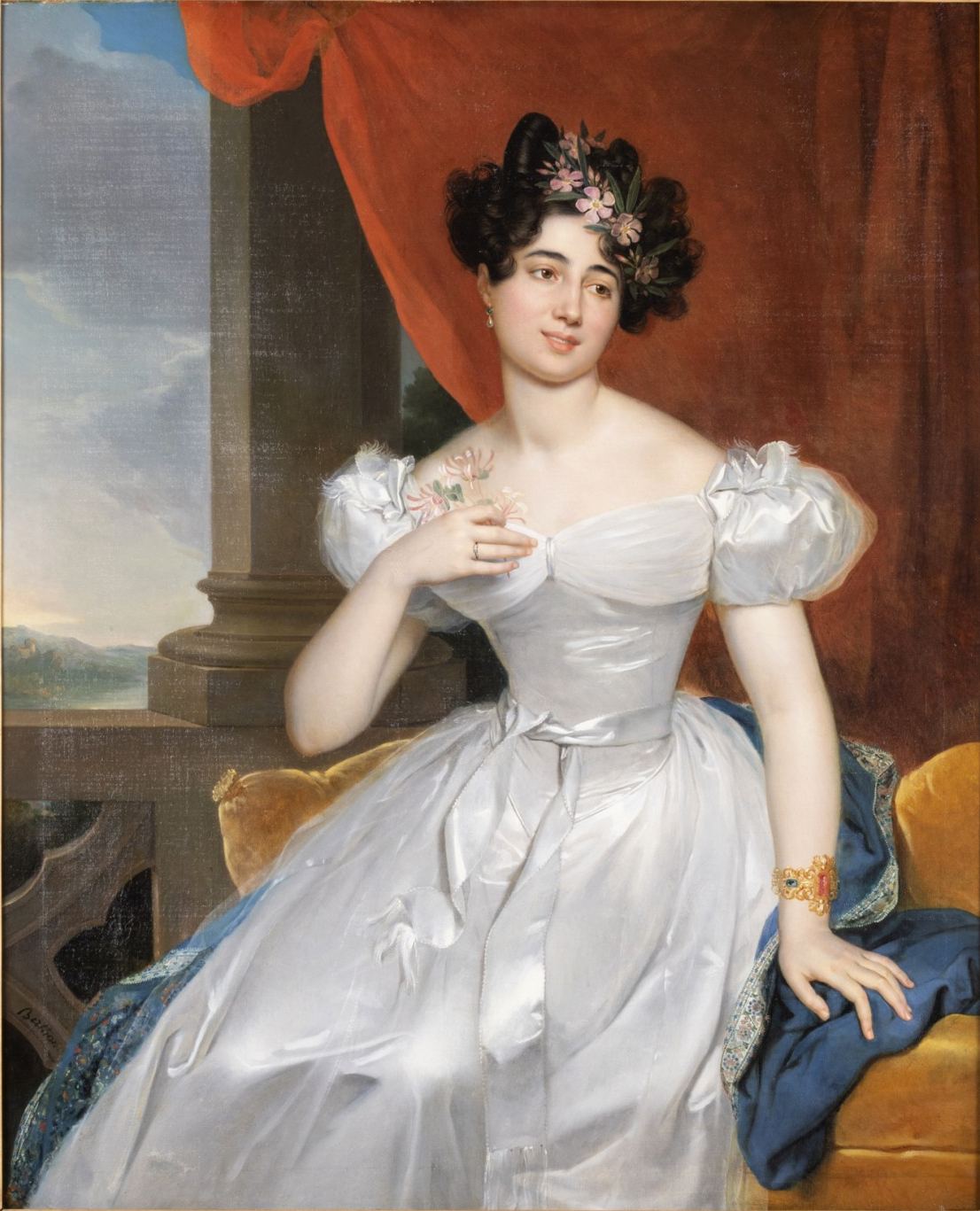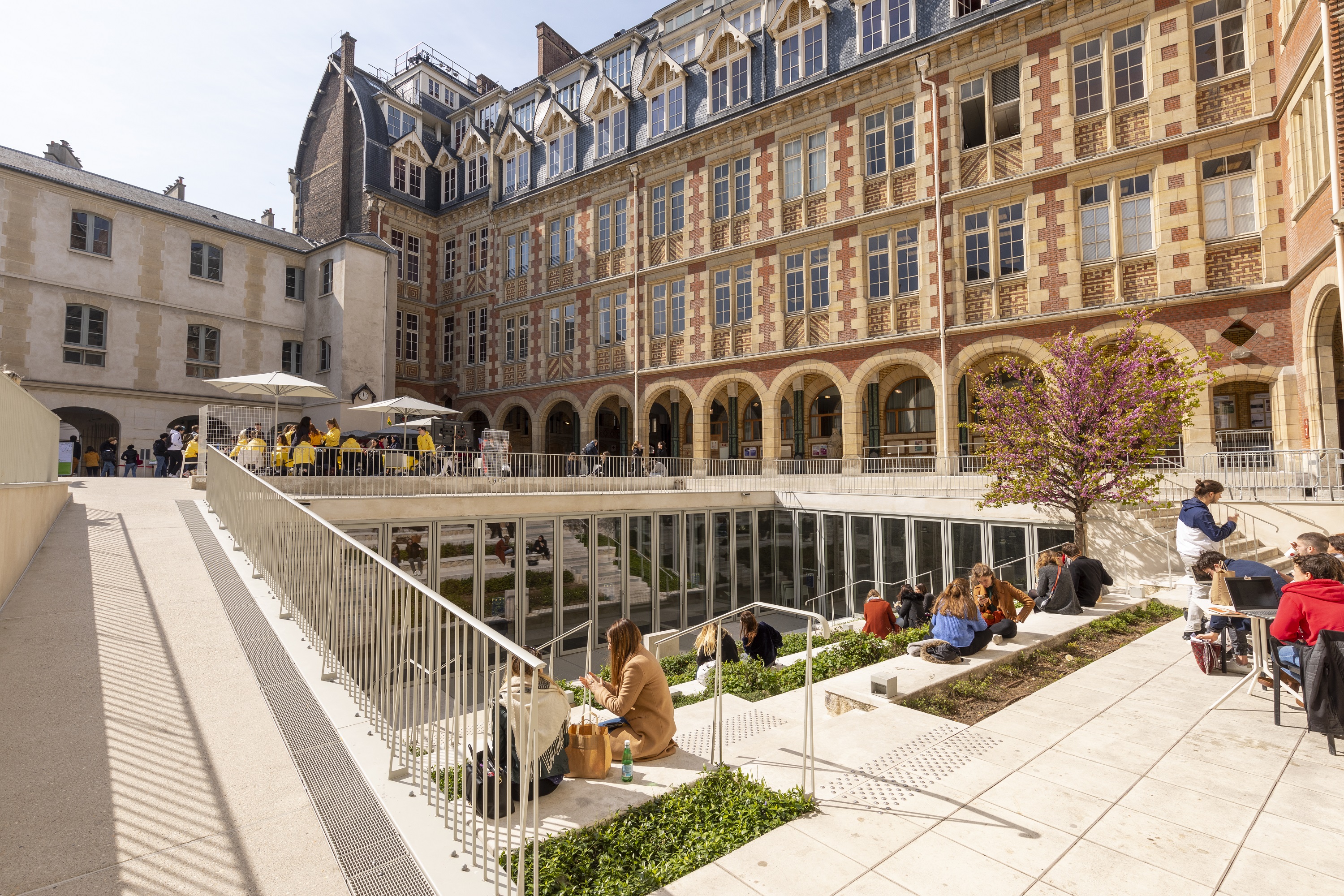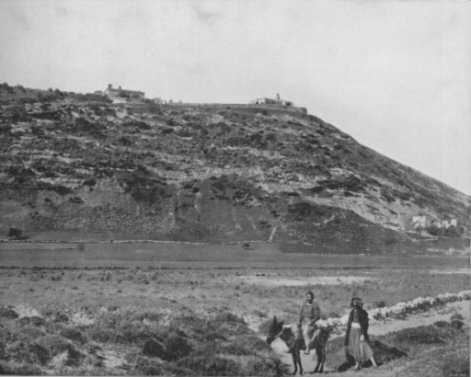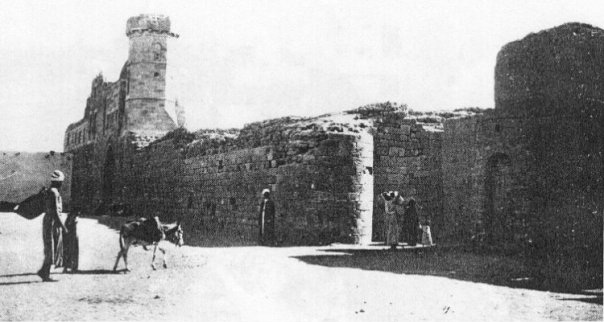|
Victor Guérin
Victor Guérin (; 15 September 1821 – 21 September 1890) was a French people, French intellectual, explorer and amateur archaeologist. He published books describing the geography, archeology and history of the areas he explored, which included Greece, Asia Minor, North Africa, Lebanon, Syria (region), Syria and Palestine (region), Palestine. Biography Victor Guérin, a devout Catholic, graduated from the ''École normale supérieure'' in Paris in 1840. After graduation, he began working as a teacher of rhetoric and member of faculty in various colleges and high schools in France, then in French Algeria, Algeria in 1850, and 1852 he became a member of the French School of Athens. While exploring Samos, he identified the spring that feeds the Tunnel of Eupalinos and the beginnings of the channel. His doctoral thesis of 1856 dealt with the coastal region of Palestine, from Khan Yunis to Mount Carmel. Guerin died on 21 September 1891 in Paris. Academic and archaeology career He wa ... [...More Info...] [...Related Items...] OR: [Wikipedia] [Google] [Baidu] |
Paris
Paris () is the Capital city, capital and List of communes in France with over 20,000 inhabitants, largest city of France. With an estimated population of 2,048,472 residents in January 2025 in an area of more than , Paris is the List of cities in the European Union by population within city limits, fourth-most populous city in the European Union and the List of cities proper by population density, 30th most densely populated city in the world in 2022. Since the 17th century, Paris has been one of the world's major centres of finance, diplomacy, commerce, culture, Fashion capital, fashion, and gastronomy. Because of its leading role in the French art, arts and Science and technology in France, sciences and its early adoption of extensive street lighting, Paris became known as the City of Light in the 19th century. The City of Paris is the centre of the Île-de-France region, or Paris Region, with an official estimated population of 12,271,794 inhabitants in January 2023, or ... [...More Info...] [...Related Items...] OR: [Wikipedia] [Google] [Baidu] |
French Algeria
French Algeria ( until 1839, then afterwards; unofficially ; ), also known as Colonial Algeria, was the period of History of Algeria, Algerian history when the country was a colony and later an integral part of France. French rule lasted until the end of the Algerian War which resulted in Algeria's Independence Day (Algeria), gaining independence on 5 July 1962. The French conquest of Algeria began in 1830 with the Invasion of Algiers (1830), invasion of Algiers which toppled the Regency of Algiers, though Algeria was not fully conquered and Pacification of Algeria, pacified until 1903. It is estimated that by 1875, approximately 825,000 indigenous Algerians were killed. Various scholars describe the French conquest as genocide. Algeria was ruled as a French colony, colony from 1830 to 1848, and then as multiple Departments of France#Departments of Algeria (Départements d'Algérie), departments, an integral part of France, with the implementing of the French Constitution of 18 ... [...More Info...] [...Related Items...] OR: [Wikipedia] [Google] [Baidu] |
Nubia
Nubia (, Nobiin language, Nobiin: , ) is a region along the Nile river encompassing the area between the confluence of the Blue Nile, Blue and White Nile, White Niles (in Khartoum in central Sudan), and the Cataracts of the Nile, first cataract of the Nile (south of Aswan in southern Egypt) or more strictly, Al Dabbah, Sudan, Al Dabbah. It was the seat of one of the earliest civilizations of ancient Africa, the Kerma culture, which lasted from around 2500 BC until its conquest by the New Kingdom of Egypt under Pharaoh Thutmose I around 1500 BC, whose heirs ruled most of Nubia for the next 400 years. Nubia was home to several African empires, empires, most prominently the Kingdom of Kush, which conquered Egypt in the eighth century BC during the reign of Piye and ruled the country as its Twenty-fifth Dynasty of Egypt, 25th Dynasty. From the 3rd century BC to 3rd century AD, northern Nubia was invaded and annexed to Egypt, ruled by the Ptolemaic Kingdom, Greeks and Roman Empire, R ... [...More Info...] [...Related Items...] OR: [Wikipedia] [Google] [Baidu] |
Egypt
Egypt ( , ), officially the Arab Republic of Egypt, is a country spanning the Northeast Africa, northeast corner of Africa and Western Asia, southwest corner of Asia via the Sinai Peninsula. It is bordered by the Mediterranean Sea to northern coast of Egypt, the north, the Gaza Strip of Palestine and Israel to Egypt–Israel barrier, the northeast, the Red Sea to the east, Sudan to Egypt–Sudan border, the south, and Libya to Egypt–Libya border, the west; the Gulf of Aqaba in the northeast separates Egypt from Jordan and Saudi Arabia. Cairo is the capital, list of cities and towns in Egypt, largest city, and leading cultural center, while Alexandria is the second-largest city and an important hub of industry and tourism. With over 109 million inhabitants, Egypt is the List of African countries by population, third-most populous country in Africa and List of countries and dependencies by population, 15th-most populated in the world. Egypt has one of the longest histories o ... [...More Info...] [...Related Items...] OR: [Wikipedia] [Google] [Baidu] |
Honoré Théodoric D'Albert De Luynes
Honoré Théodore Paul Joseph d'Albert, 8th Duke of Luynes (15 December 1802 – 15 December 1867) was a wealthy French nobleman and scholar. He is most remembered for the collection of exhibits he gave to the Cabinet des Médailles in 1862, and for supporting the exiled Comte de Chambord's claim to the throne of France. Throughout his life, D'Albert inherited a number of French titles, including Duke of Luynes, de Chevreuse, and de Chaulnes. Early life D'Albert was born on 15 December 1802 in Paris. He was the eldest son of Charles Marie d'Albert de Luynes (1783–1839) and Françoise Ermessinde de Narbonne-Pelet. His paternal grandparents were Louis Joseph Charles Amable d'Albert, 6th Duke of Luynes and Elisabeth of Montmorency-Laval, the daughter of Guy André Pierre de Montmorency-Laval, 1st Duke of Laval. His maternal grandparents were Francois-Bernard de Narbonne, Count of Pelet and Adelaide Le Conte de Nonant de Pierrecourt. His youthful Grand Tour to Italy was ma ... [...More Info...] [...Related Items...] OR: [Wikipedia] [Google] [Baidu] |
Légion D'honneur
The National Order of the Legion of Honour ( ), formerly the Imperial Order of the Legion of Honour (), is the highest and most prestigious French national order of merit, both military and Civil society, civil. Currently consisting of five classes, it was originally established in 1802 by Napoleon, Napoleon Bonaparte, and it has been retained (with occasional slight alterations) by all later French governments and regimes. The order's motto is ' ("Honour and Fatherland"); its Seat (legal entity), seat is the Palais de la Légion d'Honneur next to the Musée d'Orsay, on the left bank of the Seine in Paris. Since 1 February 2023, the Order's grand chancellor has been retired General François Lecointre, who succeeded fellow retired General Benoît Puga in office. The order is divided into five degrees of increasing distinction: ' (Knight), ' (Officer), ' (Commander (order), Commander), ' (Grand Officer) and ' (Grand Cross). History Consulate During the French Revolution, all ... [...More Info...] [...Related Items...] OR: [Wikipedia] [Google] [Baidu] |
Société Des Antiquaires De France
The Société des Antiquaires de France (Society of Antiquaries of France) is a Parisian historical and archaeological society, founded in 1804 under the name of the Académie celtique (Celtic Academy). It is now based at the Louvre, in the pavillon Mollien. History The Académie celtique was founded by prefect Jacques Cambry, Jacques-Antoine Dulaure and Jacques Le Brigant on 9 germinal Year XII (30 March 1804), with the goal of studying Gallic civilization and French history and archaeology. Cambry was its first president, until his death in 1807. In 1813 it changed its name to the Société des Antiquaires de France, after the Society of Antiquaries of London, and from 1814 to 1848 it changed again to the Société royale des antiquaires de France under the Bourbon Restoration. According to the regime in France, it was then called the Société impériale des antiquaires de France or Société nationale des antiquaires de France, but it re-assumed its present name in 1 ... [...More Info...] [...Related Items...] OR: [Wikipedia] [Google] [Baidu] |
Institut Catholique De Paris
The Institut catholique de Paris (, abbr. ICP), known in English as the Catholic University of Paris (and in Latin as ''Universitas catholica Parisiensis''), is a private university located in Paris, France. History: 1875–present The Institut catholique de Paris was founded in 1875, under the name of the Université catholique de Paris by Maurice Le Sage d'Hauteroche d'Hulst. The school settled on the site of the former convent of the Carmelites, however the premises were not well adapted. Gabriel Ruprich-Robert developed a new project for the site; however, due to a lack of sufficient funds, he decided to renovate some of the old buildings instead of destroying them. The first phase of the renovation took place between 1894 and 1897. Following the French law establishing the separation of the church and state, ownership of the premises was given to the state. In 1927, the premises were repurchased by the institute, allowing the second phase of the renovation to take place b ... [...More Info...] [...Related Items...] OR: [Wikipedia] [Google] [Baidu] |
Grenoble
Grenoble ( ; ; or ; or ) is the Prefectures in France, prefecture and List of communes in France with over 20,000 inhabitants, largest city of the Isère Departments of France, department in the Auvergne-Rhône-Alpes Regions of France, region of southeastern France. It was the capital of the Dauphiné Provinces of France, historical province and lies where the river Drac (river), Drac flows into the Isère (river), Isère at the foot of the French Alps. The population of the Communes of France, commune of Grenoble was 158,198 as of 2019, while the population of the Grenoble metropolitan area (French: or ) was 714,799 which makes it the largest metropolis in the Alps, ahead of Innsbruck and Bolzano.Comparateur de territoire INSEE A significant European scientific centre, [...More Info...] [...Related Items...] OR: [Wikipedia] [Google] [Baidu] |
Lyon
Lyon (Franco-Provençal: ''Liyon'') is a city in France. It is located at the confluence of the rivers Rhône and Saône, to the northwest of the French Alps, southeast of Paris, north of Marseille, southwest of Geneva, Switzerland, northeast of Saint-Étienne. The City of Lyon is the List of communes in France with over 20,000 inhabitants, third-largest city in France with a population of 522,250 at the Jan. 2021 census within its small municipal territory of , but together with its suburbs and exurbs the Lyon Functional area (France), metropolitan area had a population of 2,308,818 that same year, the second largest in France. Lyon and 58 suburban municipalities have formed since 2015 the Lyon Metropolis, Metropolis of Lyon, a directly elected metropolitan authority now in charge of most urban issues, with a population of 1,424,069 in 2021. Lyon is the Prefectures in France, prefecture of the Auvergne-Rhône-Alpes Regions of France, region and seat of the Departmental co ... [...More Info...] [...Related Items...] OR: [Wikipedia] [Google] [Baidu] |
Mount Carmel
Mount Carmel (; ), also known in Arabic as Mount Mar Elias (; ), is a coastal mountain range in northern Israel stretching from the Mediterranean Sea towards the southeast. The range is a UNESCO biosphere reserve. A number of towns are situated there, most notably Haifa, Israel's third largest city, located on the northern and western slopes. Etymology The word ''karmel'' ("garden-land") has been explained as a compound of ''kerem'' and ''el'' meaning "vineyard of El (deity), God" or a clipping of ''kar male,'' meaning "full kernel." Martin Jan Mulder suggested a third etymology, that of ''kerem + l'' with a lamed wiktionary:sufformative, sufformative, meaning only "vineyard", but this is considered unlikely as evidence for the existence of a lamed sufformative is weak. In Song of Songs 7:6, ''karmel'' is generally interpreted as a color, perhaps "crimson" or "yellow". suggests connecting it to the yellow "''karmel'' lily" mentioned by the Jerusalem Talmudy. Sukkah 3:6) in t ... [...More Info...] [...Related Items...] OR: [Wikipedia] [Google] [Baidu] |
Khan Yunis
Khan Yunis (), also spelled Khan Younis or Khan Yunus, is a city in the southern Gaza Strip, Palestine, and serves as the capital of the Khan Yunis Governorate. It has been largely destroyed during the Gaza war. Before the 14th century, Khan Yunis was a village known as "Salqah". A vast caravanserai, today known as Barquq Castle, was constructed there by the emir Yunis al-Nawruzi in 1387–88, an official of the Mamluk Empire to protect caravans, pilgrims, and travellers. According to the Palestinian Central Bureau of Statistics, Khan Yunis had a population of 205,125 in 2017. Khan Yunis, which lies only east of the Mediterranean Sea, has a semi-arid climate with temperature of 30 °C maximum in summer and 10 °C minimum in winter, with an annual rainfall of approximately . History Ancient period Herodotus describes a city named ''Ienysos'' () located between Lake Bardawil, Lake Serbonis and Gaza City, Kadytis (modern Gaza city). He talks about how the Persian mil ... [...More Info...] [...Related Items...] OR: [Wikipedia] [Google] [Baidu] |







